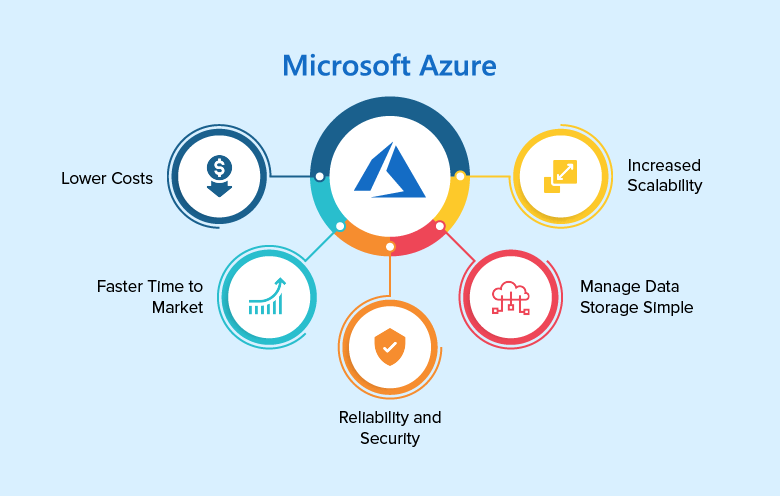Do you agree Azure managed services are a catalyst for cloud transitioning? From the time digital transformation took an enormous turn in various industries, organizations realized the cruciality of transitioning from On-premises to Azure services. When Cloud unleashes its potential with reliable technology, businesses seek technical capabilities that take them to an outstanding level of experience.
Azure-managed services bring in many modernized offerings that are scalable, reliable, consistent, and beneficial with reduced time to market. Eventually, most organizations or businesses pour in their interest in migrating from on-premises to Azure-managed services for accelerated growth.
This article discusses several aspects of Azure cloud migration and provides details on the Azure cloud platform and migration checklists that are essential for business development and modernization.
Have a look at this!
Purpose of On-Premises to Azure Services Migration
- Moving from On-premises to Azure-managed services especially provides plenty of advantages to small and medium businesses. The most noticeable perks are cost-optimization, operational agility, and security.
- Organizations can invest in other priorities rather than spending huge on maintenance and infrastructure. cloud database migration services deliver enterprise-grade infrastructure, scalability, reliability, and flexibility with robust applications.
- Standard services of Azure managed services include:
Cloud computing services: Virtual machines accompanied by computing services are available with resources like memory, processors, operating systems, disks, and networking systems. It extends support to various operating systems like Linux and Windows Server.
Storage System: It provides enough storage space on the Azure cloud. Users are allowed to store their data as files, blobs, queues, and tables.
Identity Services: Azure Active Directory is available to manage and synchronize identities on Azure cloud services. It can be used with on-premises directories and additional authentication capabilities like single sign-in.
Migrating from On-Premises to Azure Managed Services
Microsoft doesn’t compromise with seamless migration to cloud Azure cloud infrastructure with effective and efficient cloud adoption. It comprises a multi-step transitioning process from on-premises to Azure-managed services. There is a specific approach and set of tools involved to streamline and automate Azure-managed service adoption.
Azure Migration Assessment:
- The main intention for cloud migration is to obtain scalable infrastructure with cost-effective, secure, and performance benefits. Migration assessment does the major talking when businesses or organizations get on their current spending and create a comparison note with expected expenditure in the cloud.
- Azure managed services allow you to utilize optimized resources with intelligent planning, and assessment tools for databases, servers, and web applications. You will have various automation tools to carry out the migration process with no downtime to support infrastructure and migration of applications.
- This can help in discovering a seamless and hassle-free Azure cloud migration journey with the identification of applications and server dependencies, configuration analysis, and cost estimation.
- On-premises to Azure migration is considered the hub of several services including assessment, discovery, and migration requirements. Azure managed services provide in-built tools that fit in the common infrastructure scenarios of small and medium-sized organizations.
On-Premises to Azure Migration Checklist
- Pre-Migration Checklist
- Assess your current environment by finding all the performing applications and services on the servers including the dependencies between them. It implies the storage and computing resources required for the application.
- Try to define your target environment which includes a selection of required Azure services that fits in with your business requirements.
- Plan your data migration process as it is a crucial part of the Azure cloud migration. You can determine piles of data that have to be transferred, and the tools to be utilized during the process of On-premises to Azure migration.
- Review security and compliance while migrating to Azure cloud services, and check whether your data and applications are safe and secure in the cloud.
- Migration Checklist
- Create your target Azure environment by creating virtual networks, storage accounts, and virtual machine deployments.
- Start migrating your data from on-premises to Azure with tools such as Azure site recovery or Azure database migration services.
- Once the migration is done, start migrating applications along with application code and configuration of virtual machines to keep the applications performing.
- Testing your Azure environment is essential before you go live. Test your applications, validate your data, verify your network connectivity, and be prepared.
- Post Migration Checklist
- Validate your Azure environment ensuring the accuracy of the application performance and data accessibility.
- Monitor and optimize cloud environment with Azure managed services by setting up alerts with tools and optimizing according to the requirements.
- Have a backup plan with Azure disaster recovery to review backup and recovery procedures, test your recovery plan, and ensure you are all ready to protect your data during a disaster.
Conclusion
On-premises to Azure migration involves critical support from various aspects of migrating your data and applications but also benefits from decreased costs, enhanced security, and resilience. Make your migration journey flexible and reliable by choosing the best plans according to your business requirements.

